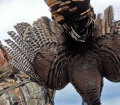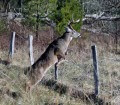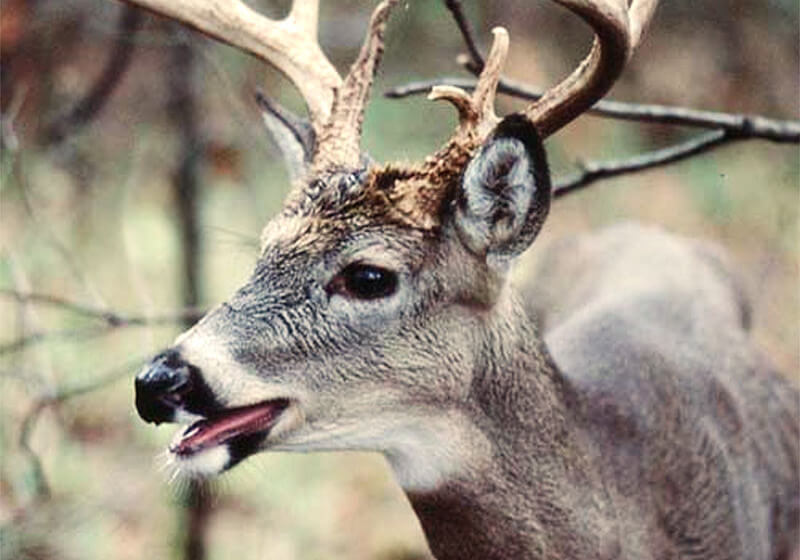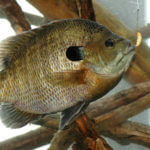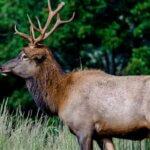Trees, Plants and Shrubs That Deer Will Feed On
Plant Type |
Description |
Acorns/Fruit |
Zone |
| Sawtooth Oak | The Sawtooth Oak is known for its rapid growth. This oak was imported from the Far East over a hundred years ago and adapted very well to life in the United States . It is by far the most popular hard mast-producing tree at this time. | ¾” – 1 ½” long, egg-shaped; about ¼ enclosed by shallow cup with hairy scales. | 5 to 9 |
| Gobbler Sawtooth Oak | Like the Sawtooth Oak, known for it’s rapid growth and mass acorn production, same characteristics of Sawtooth Oak except acorn size is smaller. | 3/8″ – 1″ long, egg-shaped; about ¼ enclosed by shallow cup with hairy scales. | 5 to 9 |
White Oak |
The classic eastern oak, with wide spreading branches and a rounded crown, the trunk irregularly divided into spreading, often horizontal, stout branches. | 3/8″ to 1-¼” long, egg-shaped; about ¼ enclosed by shallow cup; becoming light gray; with wary, finely hairy scales, maturing first year. | 3 to 9 |
Nutall Oak |
Large tree with swollen base and open crown of spreading to horizontal or slightly drooping branches. | ¾” – 1 ¼” oblong, dark stripped enclosed by deep, thick cup (¼ – ½); maturing second year. | 5 to 9 |
Willow Oak |
Conical or rounded crown of many slender branches ending in very slender, pin-like twigs with willow like foliage. | 3/8″ – ½” long and broad; nearly round, with shallow, saucer shaped cup; beaming brown; maturing second year. | 7 to 9 |
Bur Oak |
The Bur Oak, a large tree with a massive trunk and broad spread, is known for the largest acorn of all oak species. Beautiful fall color with large leaves up to 12 inches long. Have been planted along Samford Avenue on the Auburn University campus for great fall color and landscape beauty. | 1½” – 2½” long, ½ to ¾ enclosed by deep cap, which is fringed on the bottom. Have personally seen the size of a golf ball and larger. | 3 to 8 |
Shumard Oak |
A pyramidal tree becoming more spreading at maturity. | Ovate ¾” to 1″ – 1½” long, covered at base by involucral cap. | 5 to 9 |
| Live Oak
|
Medium-sized evergreen tree with short, broad trunk buttressed at the base forking into a few nearly horizontal, long branches, and very broad, spreading, dense crown. | 5/8″ – 1″ long, narrow and oblong, ¼ – ½ enclosed by deep cup; green becoming brown; maturing first year. | 7 to 10 |
| Swamp Chestnut | Large tree with compact, rounded crown and chestnut like foliage. | 1″ – 1¼” long; egg-shaped, 1/3 or more enclosed by deep, thick cup with broad base, composed of many overlapping, hairy brown scales; maturing first year. | 5 to 9 |
Overcup Oak |
Rounded crown of small, often drooping branches, with acorns almost covered by the cup and narrow, deeply lobed leaves. | ½” to 1″ long; nearly rounded, almost enclosed by large, rounded cup of warty gray scales; maturing first year. | 5 to 9 |
| Cherrybark Oak | A large, handsome, sturdy tree of the Red Oak family, noted for good timber value. Bark becomes scaly with age. | ½” – 5/8″ | 4 to 8 |
| Water Oak | Tree with conical or rounded crown of slender branches, and fine textured foliage of small leaves. | 3/8″ to 5/8″ long and broad; nearly round, with shallow, saucer shaped cup; becoming brown; maturing second year. | 6 to 9 |
| Chinese Chestnut | Large tree with a massive trunk and a broad, rounded, dense crown. | 2″ – 2½” in diameter; short-stalked burs covered with stout branched spines. About ½” long; matures in autumn and splits open along 3- 4 lines; 2-3 chestnuts ½” – ¾” long, egg-shaped, becoming shiny, dark brown, flattened and pointed; edible. | 4 to 8 |
| Allegheny Chinkapin | A small shrub used mainly for naturalizing and providing food for wildlife; a member of the chestnut family. Also blight resistant. | Nuts 1½” wide by ¾” to 1″ long, dark brown, sweet, edible nut. | 5 to 9 |
| Autumn Olive | Member of the Elaeagnus family, these little olives are a wildlife favorite. Evergreen characteristics and a network of interlocking branches provide great cover and nesting for all birds; deer relish foliage that holds into winter in the Southeast, and turkey and quail find its abundance of red berries have a taste they can’t resist. | Glossy red, 3 to 4 in a cluster, ripening September to October and can persist into December; favorite of birds. | 5 to 9 |
| Chickasaw Plum | A suckering, colonizing shrub, has most merit in wildlife plantings, pretty in spring. | ½” diameter, rounded, lustrous red (yellow) drupe. | 5 to 9 |
| Wild Plum | The Wild Plum (or American Plum) is known for its tasty fruit, white blossoms and yellow fall colors. Very adaptable shrub that thrives with neglect. Excellent source of wildlife food and cover. | Yellow to red, rounded, about 1″ long that ripens June to July. | 3 to 8 |
| Mayhaw | Small tree with relatively tall trunk and narrow, rounded crown; or a large shrub. | 5/8″ in diameter; rounded, shiny red with pale dots; slightly sour, edible pulp; 3-5 nutlets; maturing late spring. | 4 to 7 |
| Southern Crab Apple | Thicket-forming tree with straight, often fluted trunk and rounded, dense crown of spreading branches, shiny foliage, showy flowers, and small red to yellow fruit. | ¼” in diameter; bright red, orange-red, or yellow; thin, juicy pulp; usually 5 nutlets; many in drooping clusters; maturing in autumn and persisting into winter. | 4 to 8 |
| Callaway Crab Apple | Perhaps one of the best white flowered crab apples because of excellent disease resistance. | Large, reddish maroon ¾ to 1¼” diameter that may persist for extended time; good tasting. | 4 to 8 |
| Arkansas Black Apple | Hybrid apple grafted or budded, less susceptible to disease than most apples. | Dark apple, good taste; on tree until mid-winter. | 3 to 8 |
| Yates Apple | Hybrid apple that has adapted well; known to produce consistent crops and will hold apples until December or January. Small apples good to human taste as well as wildlife. | Small apples | 3 to 8 |
| Kieffer Pear | A large pear that produces within four years. Very hardy and fast growing; absolutely great for deer. | Large, yellow green; ripens July through September. | 4 to 8 |
| Wild Apple | A familiar tree with a spreading, rounded crown, showy pink-tinged blossoms, and delicious red fruit; produces fruit in July to October. | 1½” – 2½” apples; good taste. | 4 to 8 |
| Common Persimmon | Tree with a dense cylindrical or rounded crown, or sometimes a shrub, best known by its sweet, orange fruit in autumn. | ¾” – 1½” in diameter; a rounded or slightly flat, orange to purplish-brown berry; 48 large, flat seeds; maturing in autumn before frost and often remain attached into winter; orange pulp becoming soft and juicy at maturity. | 4 to 8 |
| Japanese Persimmon | Small tree, largest fruit of persimmon variety. Seedless and good for human consumption and wildlife. Fruit ripens after leaves have fallen; has fruit until December. | 2″ – 4″ in diameter | 7 to 9 |
| Black Cherry | Valuable timber tree with aggressive nature. Turkeys love seed. | 1/3″ rounded across; ripe in August and September; bittersweet taste. | 3 to 9 |
| Strawberry Bush | The Strawberry Bush (also called “Hearts-a-Burstin”), is considered a first choice or ice cream plant for whitetail. Small shrub with brilliant red orange seed that is available throughout fall and winter. | Produces small green berries throughout summer. In late summer, berries become bright red, warty fruit that bursts open to reveal a cluster of small, red orange seed. Whitetail will consume whole plant. | 5 to 9 |
| American Beautyberry | Also called French Mulberry, is a loose, open shrub that is found throughout the southeast. Light lavender colored flowers from July to August. Browsed heavily by deer and game birds. | Bright lavender to violet fruit ripening from June to November. | 6 to 11 |
| Bald Cypress | Large, needle leaf, aquatic, deciduous tree often with cone shaped “knees” projecting from submerged roots, with trunks enlarged at base and spreading into ridges or buttressed, and flattened at top. | Have needles that turn brown and shed with twig | 8 to 10 |
| Honeysuckle | A true favorite of whitetails throughout the United States , Honeysuckle will adapt to most any climate and will also grow in shady areas. Managed Honeysuckle will produce a healthy food source for deer with protein levels reaching up to 16%. Deer love the sweet taste of the Honeysuckle. Place new plants under a protective cover to prevent wildlife from damaging root systems. Honeysuckle can be planted in spring or fall. | ||
| Elderberry | Small shrub sometimes forming into small tree in ideal conditions. Ripe fruit is preferred by all game birds, especially wild turkey; deer have been known to browse on vegetation also. Small shrub sometimes forming into small tree in ideal conditions. Flowers small, white in dense clusters from June to July | Small, juicy, deep purple, ripening between August and October. |

